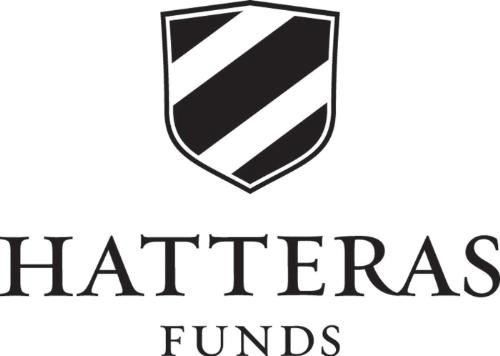Hatteras Funds
Post on: 14 Апрель, 2015 No Comment

Standardized Performance
Load More
Average Annual Total Returns. Periods less than 1 year are not annualized. Inception date: 05/02/2011. *The Fund is closed to new investors.
Fund Documents
Load More
Unless otherwise stated, performance above is as of the most recent month end.
*The Fund is closed to new investors.
1. The chart illustrates a hypothetical investment and assumes all distributions have been reinvested.
2. Performance shown is for the period beginning May 1, 2011. As of 11/30/2014.
3. The HFRI Fund of Funds Composite Index is an equal weighted index of over 650 constituent hedge fund of funds that invest over a broad range of strategies.
4. Cumulative Return. Returns are net of all expenses of the Fund, including the management fee and incentive allocations, and reflect reinvestment of all distributions, if applicable. Returns do not reflect payment of placement fees, if applicable, which would reduce returns noted above.
5. Standard deviation is a measurement of the investment´s volatility.
6. Correlation is a statistical measure of how two securities move in relation to each other.
7. Standard & Poor´s (S&P) 500 Total Return Index consists of 500 stocks chosen for market size, liquidity and industry group representation. It is a market value weighted index, with each stock´s weight in the index proportionate to its market value. You cannot invest directly in an index. Benchmark performance should not be considered reflective of Fund performance.
8. Alpha measures excess return relative to the market; often referred to as a measurement of “manager skill.”
9. Beta is a measure of a fund´s risk relative to the benchmark.
10. Sharpe ratio measures the risk-adjusted performance. Calculated by subtracting the risk-free rate (90 day U.S. T-bill yield as of the previous year-end) from the rate of return and dividing the result by the standard deviation of returns.
11. Sortino ratio differentiates between good and bad volatility in the Sharpe ratio. Differs from the Sharpe ratio by dividing by downside deviation instead of standard deviation.
12. Downside deviation is a measurement of potential loss that may arise from risk.
13. Up Capture Ratio is the cumulative return of the Fund during which the benchmark was up, relative to the benchmarks cumulative performance during the same period. Down Capture Ratio is the cumulative return of the Fund during which the benchmark was down, relative to the benchmarks cumulative performance during the same period.
Important Disclosures and Risk Factors
Certain hedging techniques and leverage employed in the management of the Fund may accelerate the velocity of possible losses. Short selling involves the risk of potentially unlimited increase in the market value of the security sold short, which could result in potentially unlimited loss for the Fund. Derivatives involve investment exposure that may exceed the original cost and a small investment in derivatives could have a large potential impact on the performance of the Fund. Options held in the Fund may be illiquid and the fund manager may have difficulty closing out a position. Fixed Income instruments are exposed to credit and interest rate risks. Investing in lower-rated (“high-yield”) debt securities involves special risks in addition to the risks associated with investments in higher-rated debt securities, including a high degree of credit risk and liquidity risk. The Fund may also invest in:
- smaller capitalized companies – subject to more abrupt or erratic market movements than larger, more established companies;
- foreign securities, which involve currency risk, different accounting standards and are subject to political instability;
- securities limited to resale to qualified institutional investors, which can affect their degree of liquidity;
- shares of other investment companies (affiliated) that invest in securities and styles similar to the Fund, resulting in a generally higher investment cost than from investing directly in the underlying shares of these funds;
- shares of other non-affiliated investment companies primarily including ETFs.
The Fund intends to utilize these individual securities and hedging techniques in matched combinations that are designed to neutralize or offset the individual risks of employing these techniques separately. Some of these matched strategies include merger arbitrage, long/short equity, convertible bond arbitrage and fixed-income arbitrage. There is no assurance that these strategies will protect against losses.
Because the Fund is a fund-of-funds, your cost of investing in the Fund will generally be higher than the cost of investing directly in the shares of the mutual funds in which it invests. By investing in the Fund, you will indirectly bear your share of any fees and expenses charged by the underlying funds, in addition to indirectly bearing the principal risks of the funds. Please refer to the summary prospectus or prospectus for more information about the Fund, including risks, fees and expenses.
Mutual fund investing involves risk; loss of principal is possible. Please consult an investment professional for advice regarding your particular circumstances. An investment in the Fund may not be suitable for all investors.
The Fund is offered only to United States residents, and information on this site is intended only for such persons. Nothing on this site should be considered a solicitation to buy or an offer to sell shares of the Fund in any jurisdiction where the offer or solicitation would be unlawful under the securities laws of such jurisdiction.














